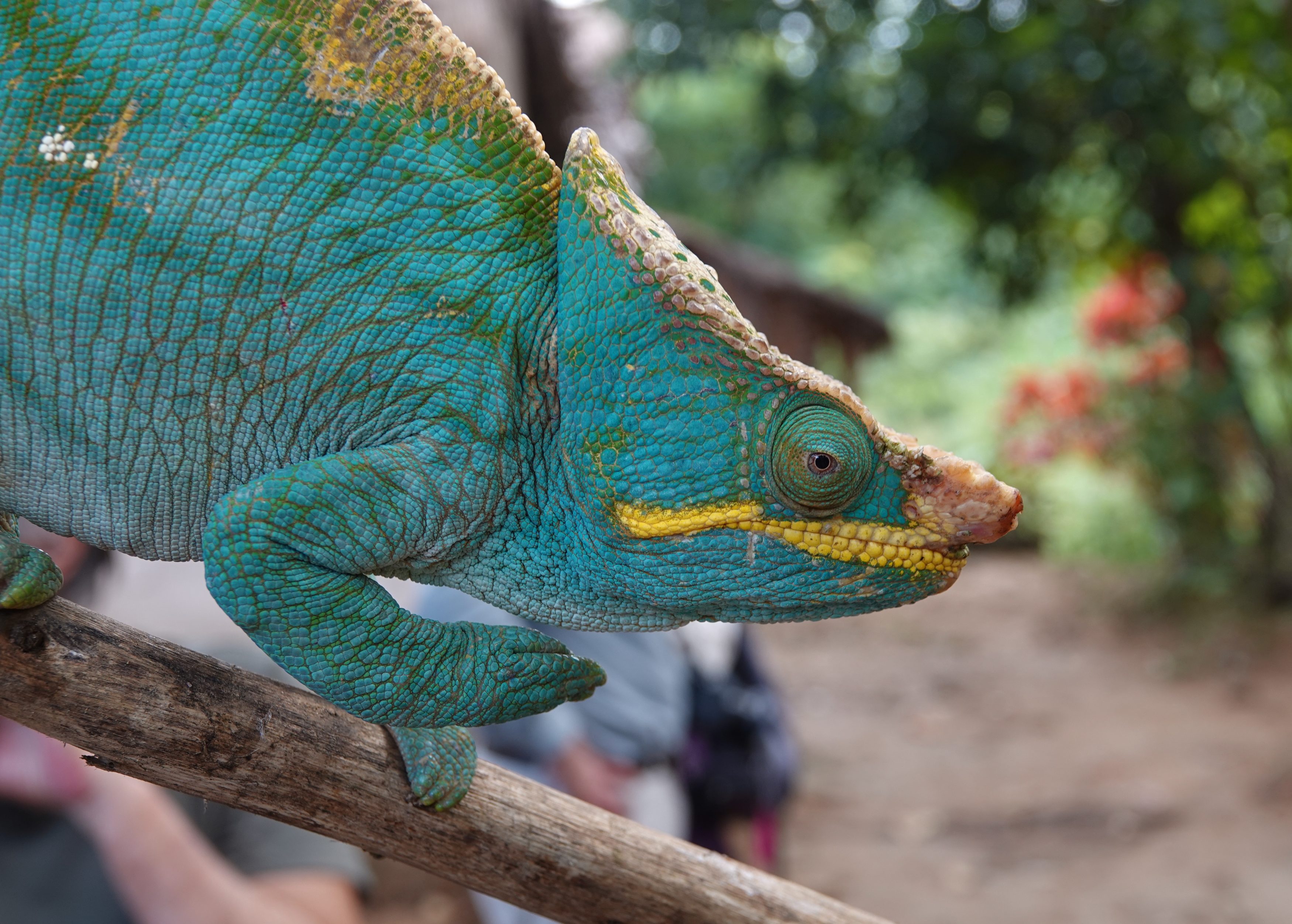Nearly half of the world’s circa 200 species of chameleon live only in Madagascar, including the most massive – Parson’s chameleon, Calumma parsoni.
Its spectacular ability to change colour is a means of communication rather than camouflage.
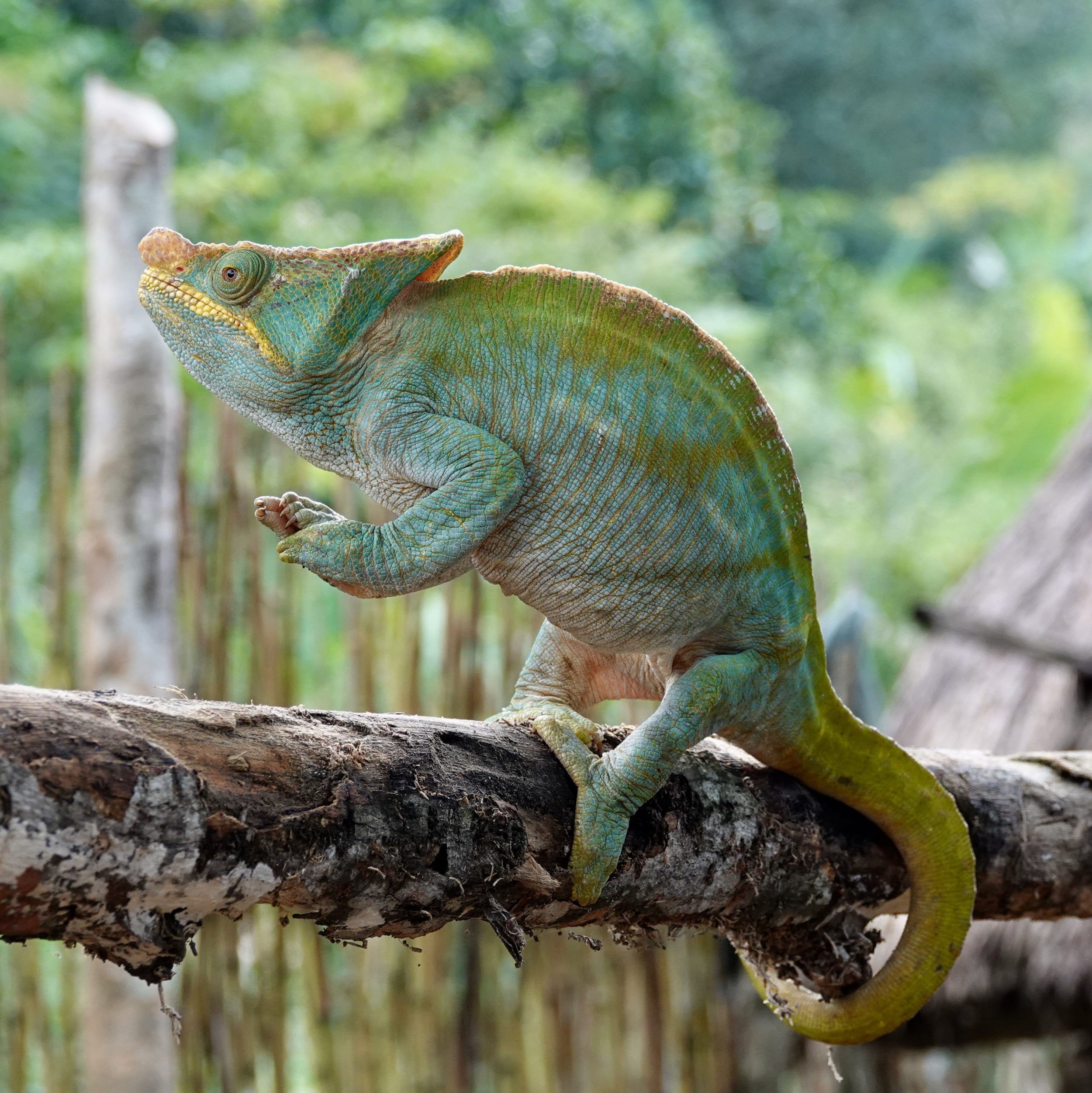
Parson’s chameleon is omnivorous.
Allegedly, it can even tackle small birds, but it is primarily an eater of insects.
It lives in isolated pockets of humid forest in Madagascar.
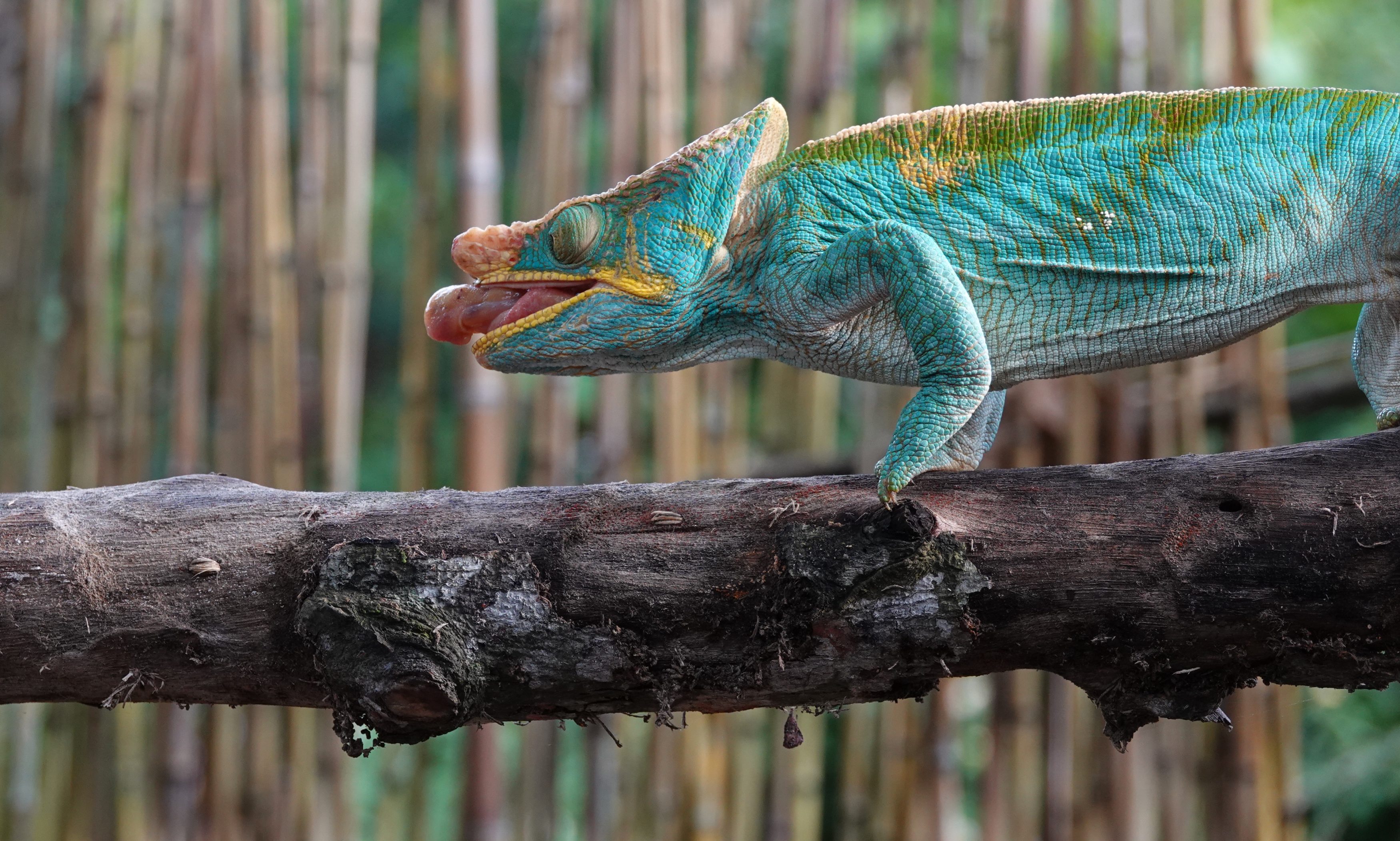
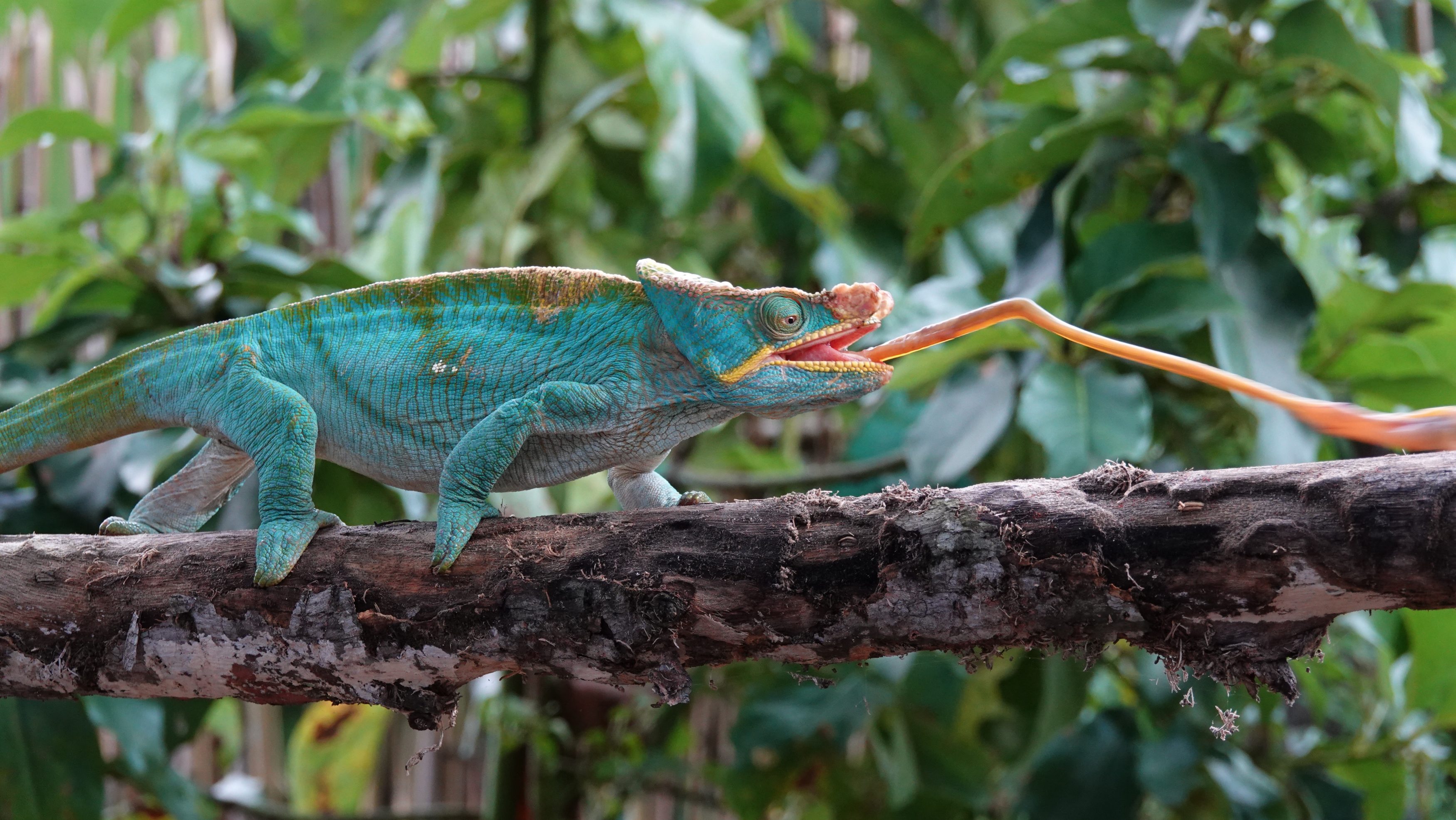
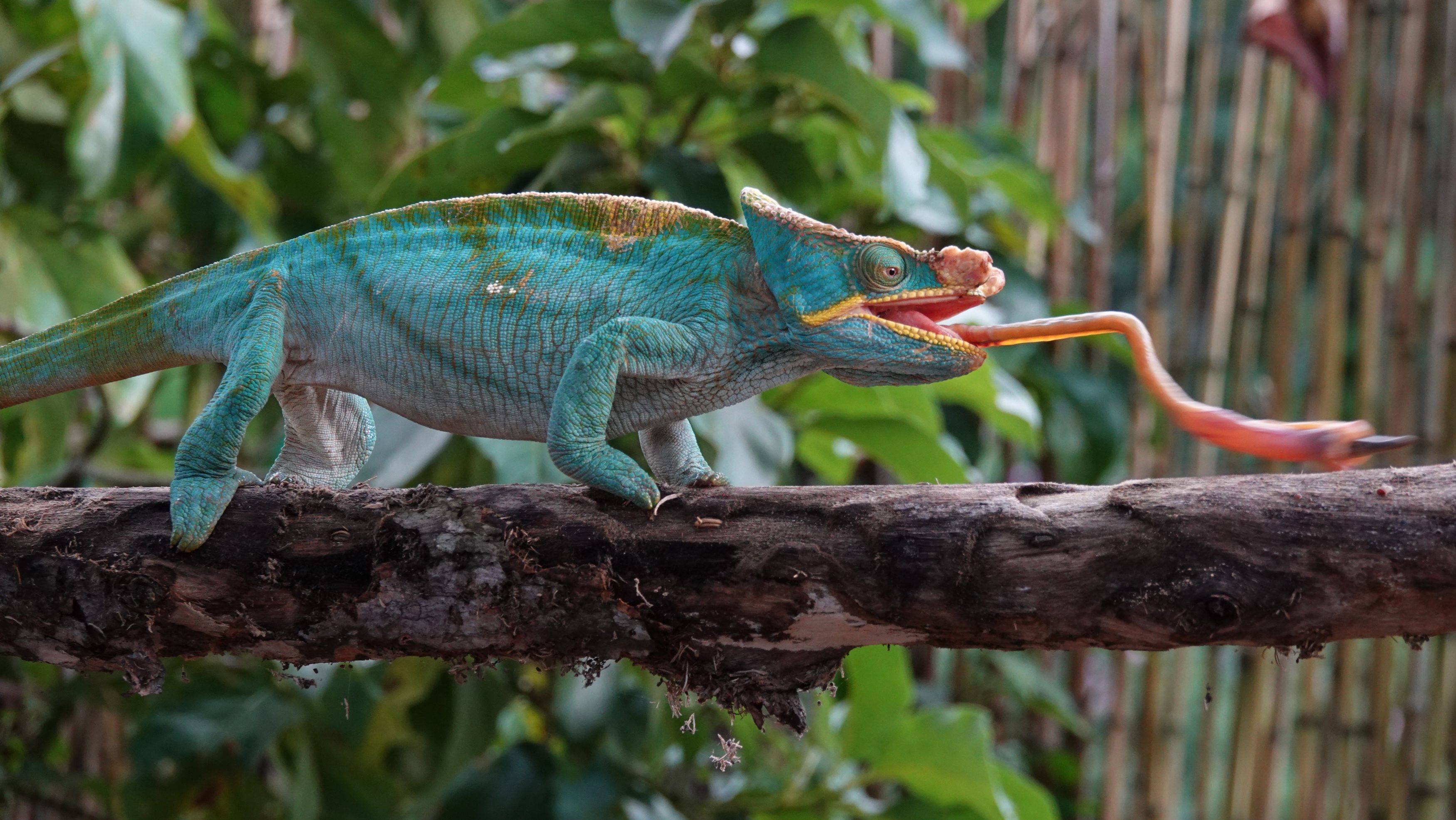
All photos copyright Doug Spencer, taken near Ranomafana on afternoon of 14 May 2018.
A single “strike” – from the tongue’s “explosion” through to its return to the chameleon’s interior – takes less than one second.
A future post will feature several other of Madagascar’s chameleons; they range very widely in size, appearance, and habitat.
